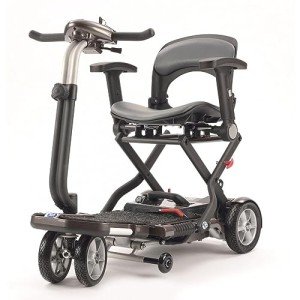Understanding Mobility Aids: Enhancing Independence and Quality of Life
As society continues to age and individuals increasingly look for methods to preserve self-reliance, the need for mobility aids has never been more important. Mobility aids, which incorporate a variety of devices developed to help individuals with walking or walking around, play an important role in promoting mobility, enhancing security, and enhancing general lifestyle. This blog post will check out the different types of mobility aids, their advantages, considerations for selection, and respond to some frequently asked concerns.
Types of Mobility Aids
Numerous mobility aids are available, each developed to address specific requirements. The following table summarizes a few of the most common types of mobility aids and their functions.
| Type of Mobility Aid | Description | Best Suited For | Key Features |
|---|---|---|---|
| Walking canes | A handheld stick offering support and balance. | Individuals who require minimal assistance. | Light-weight, portable, adjustable height. |
| Walkers | Four-legged frames supplying stability. | Those needing considerable support while strolling. | Foldable, some with wheels, added security functions. |
| Rollators | Wheeled walkers with a seat for resting. | People requiring mobility with the option to rest. | Brakes, baskets for individual items, adjustable height. |
| Wheelchairs | Chairs with wheels for individuals with restricted mobility. | Those unable to stroll or requiring substantial support. | Handbook or powered alternatives, personalized seating. |
| Scooters | Motorized devices for larger ranges. | People with limited stamina however requiring independence. | Different sizes and designs, frequently easily transportable. |
| Crutches | Support devices placed under the arms or lower arms. | People recovering from lower limb injuries. | Adjustable, lightweight, requires upper body strength. |
| Stairlifts | Mechanical devices for moving between floors. | Users facing difficulties in multi-level homes. | Adjustable for different staircases, automated. |
Advantages of Mobility Aids
Mobility aids supply a variety of advantages that can substantially enhance the lives of people facing mobility obstacles. Some notable benefits consist of:
- Increased Independence: Mobility aids empower individuals to move freely without depending on others for assistance, therefore improving their confidence and self-esteem.
- Enhanced Safety: Using mobility aids can reduce the risk of falls and injuries, especially for older adults or those with balance issues.
- Improved Quality of Life: By assisting in mobility, individuals can participate in social activities, go to occasions, and delight in life more completely, adding to better emotional and mental health.
- Rehab Support: After surgical treatment or injury, mobility aids provide needed assistance and stability, assisting in recovery and rehab procedures.
- Ease of access: Many mobility aids are created to be used both indoors and outdoors, ensuring that people can navigate various environments with ease.
Elements to Consider When Choosing Mobility Aids
Choosing the suitable mobility aid needs careful factor to consider of numerous factors, including:
| Factor | Factors to consider |
|---|---|
| User's Needs | Assess the level of mobility needed; consider whether the user needs temporary or long-lasting help. |
| Physical Limitations | Evaluate the user's strength, balance, and coordination to determine the very best kind of help. |
| Setting | Consider the primary environments where the help will be utilized, such as home, outdoors, or specific terrains. |
| Weight and Portability | Make sure that the picked gadget is manageable regarding portability and storage, specifically for outside use. |
| Budget | Mobility aids been available in a variety of prices; think about insurance protection and readily available funding choices. |
| Adjustability | Choose aids that can be changed for height and convenience to accommodate growth or altering needs. |
Often Asked Questions About Mobility Aids
1. How do I understand if I require a mobility aid?
Numerous aspects can signal the need for a mobility aid, such as difficulty walking or stabilizing, tiredness while standing, or a current surgery impacting mobility. Consulting with a healthcare professional can supply guidance customized to individual needs.
2. What types of mobility aids are covered by insurance?
Coverage varies in between insurers, however most offer choices for long lasting medical devices, which usually includes wheelchairs, walkers, and some kinds of walking sticks. Contact your insurance coverage supplier for specific coverage info.
3. Can mobility aids be utilized outdoors?
Yes, lots of modern-day mobility aids are designed for outdoor usage. Rollators, scooters, and some walkers are geared up with functions for stability and ease of usage on different surface.
4. How do I preserve my mobility aid?
Routine maintenance includes looking for any wear and tear, ensuring that parts such as wheels, brakes, and frames are operating correctly, and cleaning up the devices as required. Following the producer's guidelines is crucial for security.
5. Is there a danger of becoming depending on mobility aids?
While some users may become reliant on mobility aids, they are designed to promote independence and mobility. Slowly utilizing a mobility help can improve self-confidence and assistance maintain physical strength and coordination.
Mobility aids are important tools that empower people to get rid of physical challenges, promoting self-reliance and enhancing quality of life. By understanding fold up scooters of mobility aids offered, their benefits, and essential elements for factor to consider, households and caregivers can make educated choices that best meet the requirements of their liked ones. With the right assistance, those with mobility obstacles can lead fulfilling and active lives, totally free to explore the world around them.

